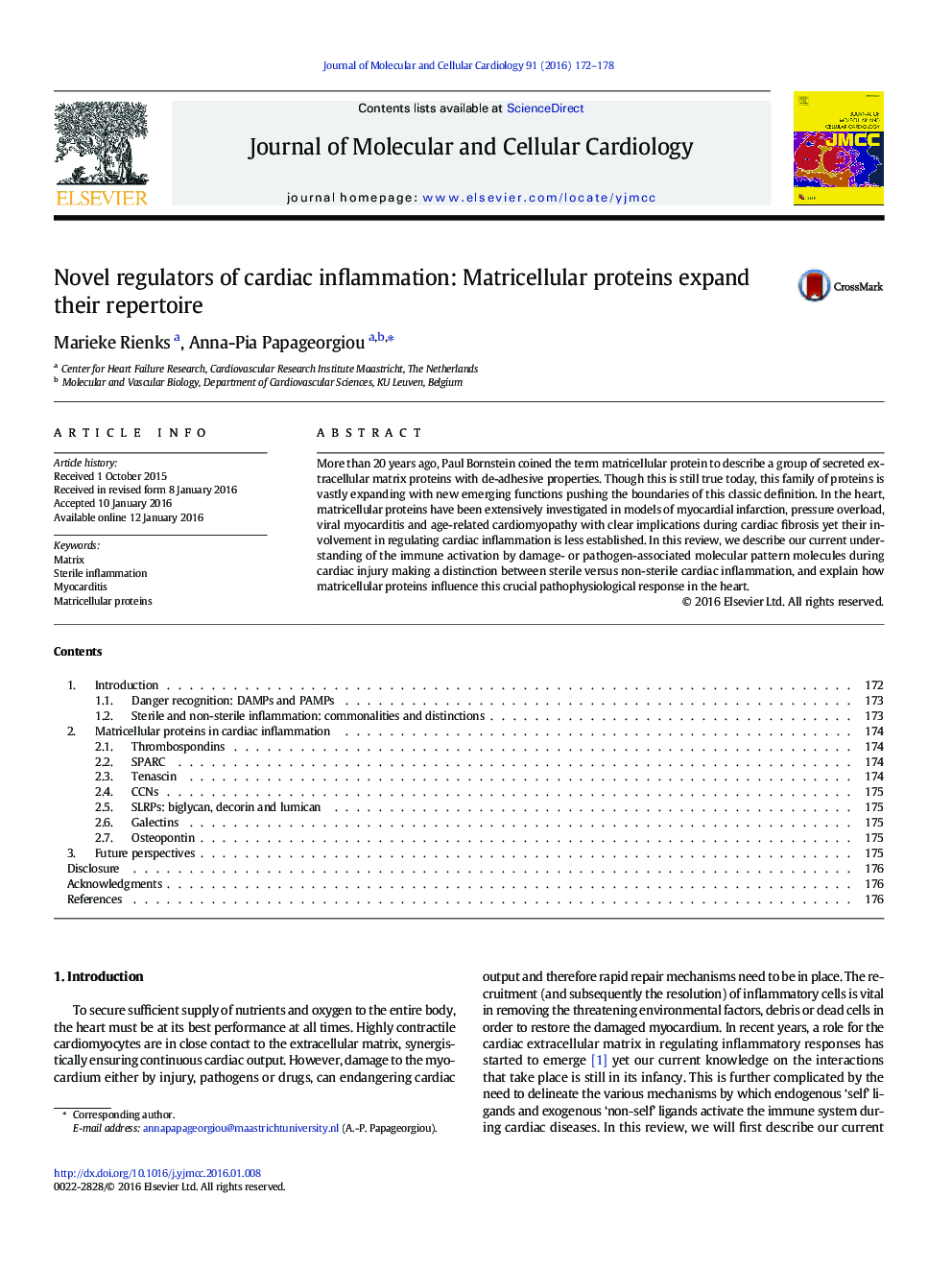| Article ID | Journal | Published Year | Pages | File Type |
|---|---|---|---|---|
| 8473994 | Journal of Molecular and Cellular Cardiology | 2016 | 7 Pages |
Abstract
More than 20Â years ago, Paul Bornstein coined the term matricellular protein to describe a group of secreted extracellular matrix proteins with de-adhesive properties. Though this is still true today, this family of proteins is vastly expanding with new emerging functions pushing the boundaries of this classic definition. In the heart, matricellular proteins have been extensively investigated in models of myocardial infarction, pressure overload, viral myocarditis and age-related cardiomyopathy with clear implications during cardiac fibrosis yet their involvement in regulating cardiac inflammation is less established. In this review, we describe our current understanding of the immune activation by damage- or pathogen-associated molecular pattern molecules during cardiac injury making a distinction between sterile versus non-sterile cardiac inflammation, and explain how matricellular proteins influence this crucial pathophysiological response in the heart.
Related Topics
Life Sciences
Biochemistry, Genetics and Molecular Biology
Cell Biology
Authors
Marieke Rienks, Anna-Pia Papageorgiou,
